Panchakarma – Ayurvedic Complete Detoxification and Cleansing
Panchakarma is Ayurveda’s primary purification and detoxification treatment. The word Panchakarma contains two Sanskrit words ‘Pancha’, which means five, and ‘Karma’ which means action. Together it means ‘five actions’ which shows clearly what Panchakarma actually is: an Ayurvedic treatment consisting of five different actions which clean the body from any kind of toxic material.
Ayurveda says that whenever your doshas, your body humours, are not in balance, waste matter is created which which is called Ama. It is a noxious, foul-smelling substance of which the body has to be cleaned as thoroughly as possible which can be done with Ayurvedic treatments such as Panchakarma. In order to avoid producing Ama, a proper diet according to your dosha as well as a healthy lifestyle with exercises is recommended.
All purification techniques of Ayurveda are called Shodana. Panchakarma combines a series of five treatments which together help to remove toxins that cause deep rooted stress and illness. These five therapies are: Vaman, Virechan, Nasya, Basti and Rakta Moskshana. The Ama is evacuated through sweat glands, urinary tract, intestines, etc. and the body can come back into its natural balance.
Panchakarma is a highly personalized treatment. A particular Panchakarma method is given according to the individual‘s constitution and disorder. It is based on the needs of the individual depending on the body type, dosha imbalances etc. Usually, only parts of the five therapies are needed. It is a very pleasant experience and additionally involves daily massages that support the process of Ayurveda detoxification. Ayurveda recommends Panchakarma as a seasonal treatment for toning your mind and body system.
Toxins from chemicals in our food, pollution in the environment, drinking, smoking, stress, chemical medication, etc. all accumulate in our body over a period of time. These toxins are the cause of myriad diseases and health and emotional problems. Western medicine has had no success in removing these toxins safely and effectively from our body. In Ayurveda detoxification and rejuvenation is achieved with ‘Panchakarma’, which removes deep-seated toxins naturally without any negative side effects.
Panchakarma is Ayurveda’s primary purification and detoxification treatment. Panchakarma means the “five therapies”. These 5 therapeutic means of eliminating toxins from the body are Vamana, Virechana, Nasya, Basti and Raktamoskshana. This series of five therapies help remove deep rooted stress and illness causing toxins from the body while balancing the doshas (energies that govern all biological functions).
The detoxification process contains three steps
1. Purvakarma – Preparations which have to be done before the detoxification
2. Pradhanakarma – The main detoxifying process
3. Pashchat karma – Rehabilitating the diet and lifestyle after the detoxification process.
Purvakarma: Pre-purification Measures
The body needs to be prepared for the actual purification. With two procedures, Snehan and Svedana, the body is encouraged to let go of the toxins that have been accumulated. Snehan is ayurvedic massage with oil. Oil is applied to the entire body with particular massage techniques. Oil massage also makes the superficial and deep tissues soft and flexible, gives stress relief and stimulates the nervous system. Svedana is sweating which is induced by steam. Svedana is given right after Snehan and it liquefies the toxins and increases the movement of toxins into the gastrointestinal tract.
Pradhana Karma : This is the main detoxifying process. The softened and loosened toxins are expelled from body by five methods. Considering these five major detoxifying methods the whole process is named as “Panchakarma” (Pancha = 5, Karma = process ) .
- Vamana (through Emesis),
- Virechana (Purgation),
- Niruha basthi Basthi (enema with herbal concoctions ),
- Anuvasana basthi (enema with medicated oil)
- Nasya (nasal drops) and Raktamokshana (Blood letting).
Five different Therapies
Vamana (Therapeutic vomiting)
Therapeutic vomiting is used when there is congestion in the lungs through an accumulation of Kapha or mucus. If Kapha is predominant, too much mucus is created and can result in attacks of bronchitis, cold, cough and asthma. Vamana is an emesis therapy that removes Kapha toxins from the body and especially from the respiratory system. The therapist induces vomiting by a drink containing liquorice and honey, calamus root tea or drinks with salt and cardamom and with the help of rubbing on the tongue.
4-8 times vomiting is the target. After vomiting the patient will feel very comfortable. Congestion, wheezing and breathlessness will to a good part diappear after clearing the sinus. Vamana is given for treating cough, cold, symptoms of asthma, diabetes, lymphatic obstruction, chronic indigestion, loss of appetite, anaemia, skin diseases, edema (swelling), epilepsy (between attacks), fever, nausea, poisoning, chronic sinus problems, hyperacidity, chronic allergies, hay fever, Vitiligo, Psoriasis, obesity, psychological disorders and repeated attacks of tonsillitis.
After Vamana it is recommended to rest and fast and not to suppress natural urges (i.e. coughing, sneezing, urination, defecation, gas) . If the therapeutic vomiting was done professionally and successfully, the patient feels relaxation in the lungs, is able to breathe freely, feels light in the chest, can think clear, has a clear voice and a good appetite and all symptoms of congestion disappear.
Virechana (Laxation Therapy)
Laxation Therapy is used when Pitta, excess bile, is accumulated in the liver, gall bladder and small intestine. This accumulation of Pitta can cause acne, skin inflammation, rashes, nausea and all kinds of intestinal issues. Virechana is a medicated purgation therapy which thoroughly cleanses the gastro-intestinal system. It cleanses the stomach, liver, kidneys, sweat glands, small intestine, colon and spleen
A number of fine herbs are used as a laxative. These include cow’s milk, salt, flaxseed husk, senna, bran, prune, dandelion root, castor oil, raisins and mango juice. In the time of Virechana, when you take these laxatives, your diet needs to be restricted. You should not eat food that will increase the predominant dosha and keep a balanced diet. Virechana is a safe procedure without side effects.
The benefits of Virechana are wide. It helps if you have gastrointestinal problems, irritable bowel syndrome, worms, constipation, digestive disorders, diabetes, piles, abdominal tumors, chronic fever, asthma, skin disorders such as Herpes, Paraplegia, Hemiplegia, headaches, joint disorders, Vitiligo, Psoriasis, hyperacidity, gout, jaundice, Elephantiasis and gynecological disorders. Laxatives can completely cure the problem of excess Pitta.
Basti (Enema)
Enema is used for cleansing the toxins of all three doshas, Vata, Pitta and Kapha after having loosened them. Basti is also the most effective treatment for issues with the Vata dosha, in general gas problems. Ayurveda specifies over 100 specific enemas with different medicinal substances which remove the toxins through the colon. Such substances are calamus oil, sesame oil or other herbal decoctions in a liquid medium introduced into the rectum.
Basti alleviates the common cold, kidney stones, colitis, distention, chronic fever, obesity, constipation, irritable bowel syndrome, sexual disorders, digestive disorders, heart pain, vomiting, backache, neck pain, hyper acidity, hemiplegic, paraplegia, convalescence, cervical spondylosis, hepatomegaly, splenomegaly, piles, sciatica and other pains in the joints as well as other issues caused by Vata imbalances like arthritis, rheumatism, muscle spasms, gout and headaches. Ayurveda counts about 80 disorders related to Vata of which 80% can be treated with medicated enemas. The main location of Vata is in the large intestine but also bone and joint issues are related to Vata imbalances. The mucus membrane of the colon is related to the outer covering of the bones (periosteum), which nourishes the bones. This is how medication given rectally goes into deeper tissues until the bones and can correct Vata problems.
Nasya (Nose Cleaning)
Nasya, the administration of medication through the nose, is used to cleanse sinus, throat, nose and head from accumulated Kapha toxins. The accumulation which can cause headaches, migraine and voice and throat problems is dissolved and eliminated through the nose. Nasya also involves inhaling vapour from medicinal herbs that have been infused in boiling water.
It is a very relieving treatment for the whole area of the head. It can cure headaches in different areas of the head, breathing difficulties, improvement of memory & eye sight, insomnia, loss of smell and taste, Hemiplegia, stiffness of the neck, dryness of the nose, nasal polyp, neurological dysfunctions, nasal allergies, Sinusitis, migraine, frozen shoulder, hoarseness, Bel’s Palsy, pre-mature graying of hair, Trigeminal Neuralgia and Paraplegia. Through this cleansing breathing patterns will also change when a deeper breathing will be possible.
Rakta Mokshana (Blood Letting)
Blood letting is used to eliminate toxins that are absorbed into the bloodstream through the gastro-intestinal tract and circulating through the whole body. Some ingredients of nutrition such as salt, yogurt, sugar, sour-tasting foods and alcohol bring these toxins into the blood which can cause hypertension, infections and other circulatory conditions. Because of this these substances are avoided if someone has certain blood disorders.
The Rakta Mokshana process purifies the blood from these toxins and stimulates the spleen to produce anti-toxic substances which then stimulate the immune system. In cases of enlarged liver, spleen and gout blood letting is also indicated as a proper treatment. It is said to help repeated attacks of skin disorders such as acne, urticaria, scabies, rashes, herpes, leukoderma, eczema, chronic itching or hives.
This Ayurvedic treatment is only advised in very rare conditions and not during the general Panchakarma treatment. Due to the high risk of infection most Ayurveda Centers do not offer blood letting as a treatment. In our Ayurveda Yoga Holiday this will not be part of the Panchakarma program, either.
Purvakarma : These steps are adopted to soften the channels and toxins, so that the toxins can get detached and eliminated easily during main detoxifying process. The hard toxic clogs are made to get loosened by increasing body fire or agni. Medicines are administered internally for this purpose. This process is called as “deepana and pachana” in ayurveda. ( the duration of this process is 3-5 days depending on the conditions and diseases)
Later whole body is oleated internally and externally with medicated oil or ghee. This process is called as “Snehana” .
Internal oleation is done by administering small quantities of medicated oil or ghee internally. The duration of internal oleation , quantity and type of medicated oil or ghee is determined by the physician after analyzing the body constitution of the patient. The patient has to eat liquid food or light food on the day prior to internal oleation. After consuming the medicated oil or ghee the patient is encouraged to sip warm water frequently. When medicated oil or ghee is completely digested, the patient is advised to consume light food.
External oleation is done after the completion of internal oleation.. The whole body or body part is massaged with medicated oil. Few types of external oleation are used as treatment methods. They are
- Abhyanga ; Massaging whole body
- Lepa – Smearing medicated oil and herbs
- Mardana – Kneading the body parts with fingers and fists.
- Padaghata – Tampling the body with foot.
- Gandusha – The mouth is filled with oil and is retained for a longer period of time.
- Parisheka (Pizhichil ) – The warm medicated oil is poured continuously over the entire body for an extended period of time.
Soon after oil massage the body or body part is exposed to heat through steam bath or other heating methods according to the physician’s choice. This process of exposing body to heat is called as swedana or sweating. Both snehana and swedana help to soften the channels and toxin clogs. Elimination of toxins becomes easy when channels are soft and toxins are loose.
Physician can chose any of these detoxifying methods according to disease and prevalence of doshas.
Paschat Karma: A strict diet and lifestyle procedure has to be followed through out Panchakarma treatment. The rehabilitative procedures to bring back the diet and lifestyle to normal are considered as “paschat Karma”. In this stage the digestion power is brought back to normalcy. Medicines are administered to rejuvenate the body or to treat the disease.
During panchakarma treatment the following rules have to be strictly followed.
- One has to use only warm water to drink, bathe and for other activities.
- Person who is undergoing panchakarma therapy can not indulge in sex.
- Sleeping in daytime is contraindicated.
- Natural urges should not be controlled.
- Exposures to extreme temperatures or weather conditions have to be avoided.
- Keeping awake at night is not advisable
- Foods which cause indigestion can not be consumed.
- Exercise and mental stress have to be avoided.
The Panchakarma therapy is not advisable for persons in whom the following conditions exist.
- Menses
- Lactation
- Cancer of the Lungs or Testicles
- Melanoma
- HIV or AIDS
- Extreme Obesity
- Lympho-Sarcoma
- Hypertension
- Congestive Heart Failure
- Emaciation
- Any Active Infectious Disease
- Pregnancy
- Angina Pectoris
The benefits of Panchakarma are as follows
- Toxins are eliminated from body .
- Doshas get Balanced.
- Stress is reduced and body gets relaxed.
- Slows ageing process and increases the lifespan.
- Increases glow and luster of skin.
- Boosts body immunity and body energy level.
- Enhances strength, energy, vitality and mental clarity
- Reduces dependence on alcohol, tobacco and drugs.
- Help to implement healthy diet and lifestyle.

![PANCHAKARMA [ Detoxification ] PANCHAKARMA [ Detoxification ]](https://indianartz.com/blog/wp-content/uploads/2017/07/PANCHAKARMA--Detoxification--218x150.png)
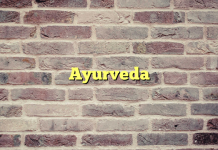
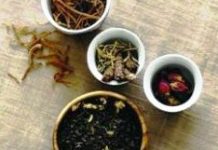
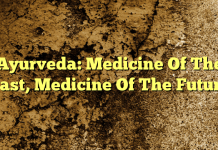

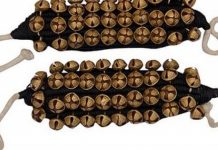

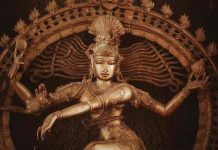

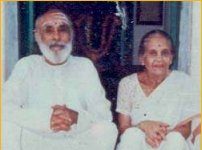
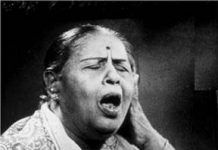
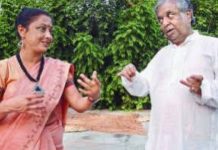


![PANCHAKARMA [ Detoxification ] PANCHAKARMA [ Detoxification ]](https://indianartz.com/blog/wp-content/uploads/2017/07/PANCHAKARMA--Detoxification-.png)










